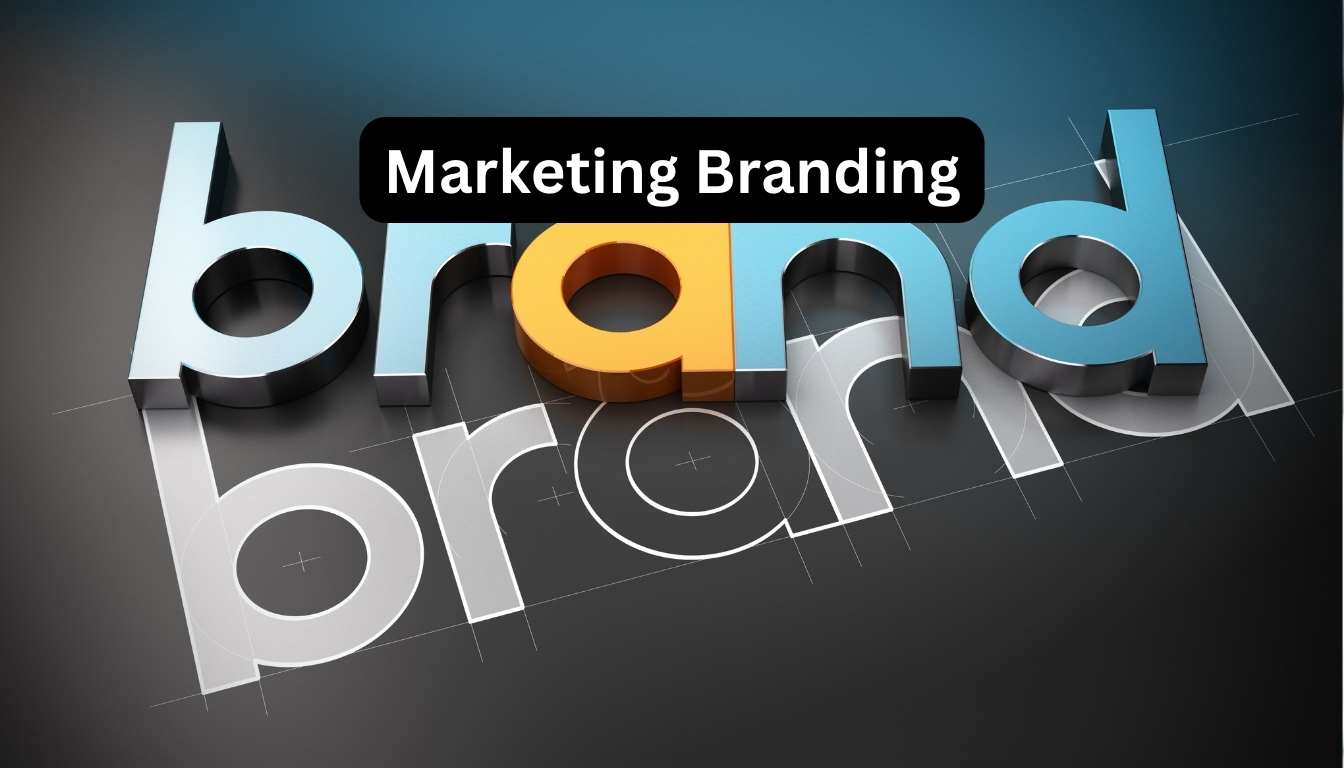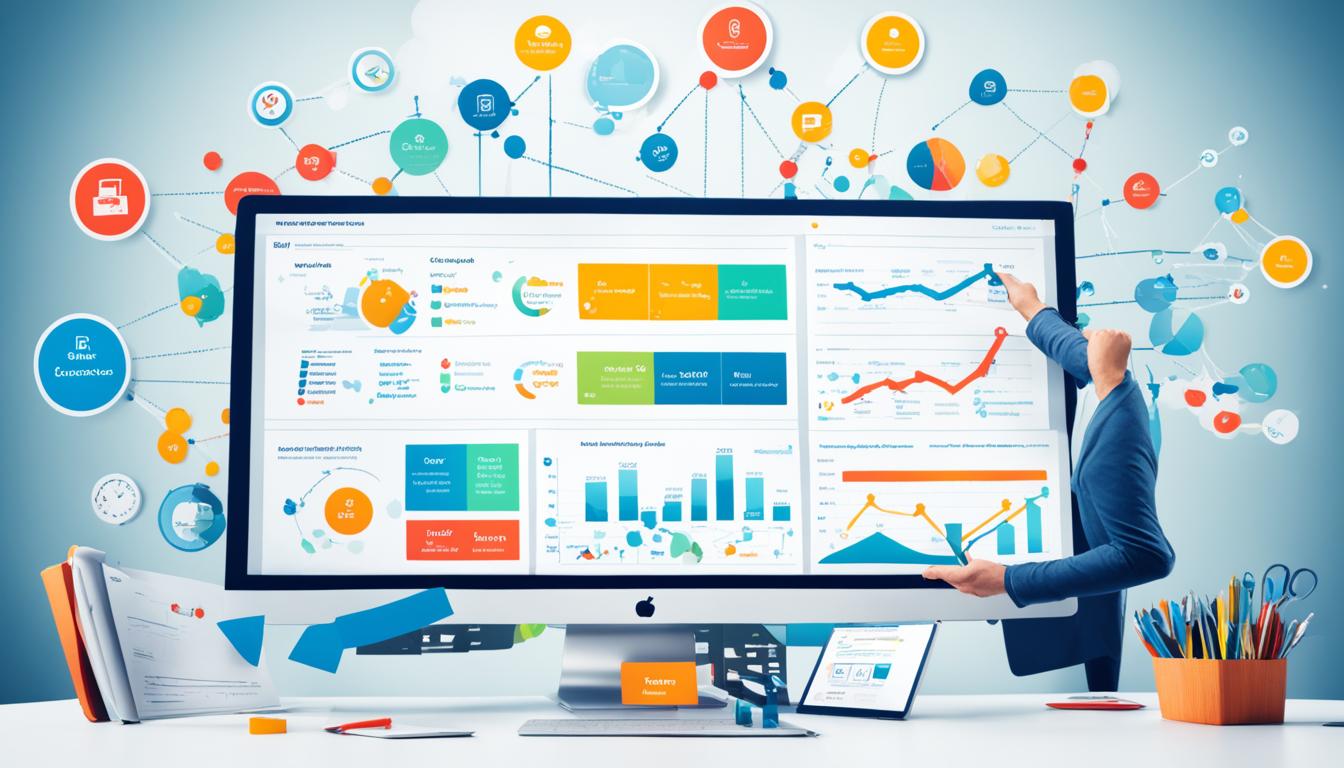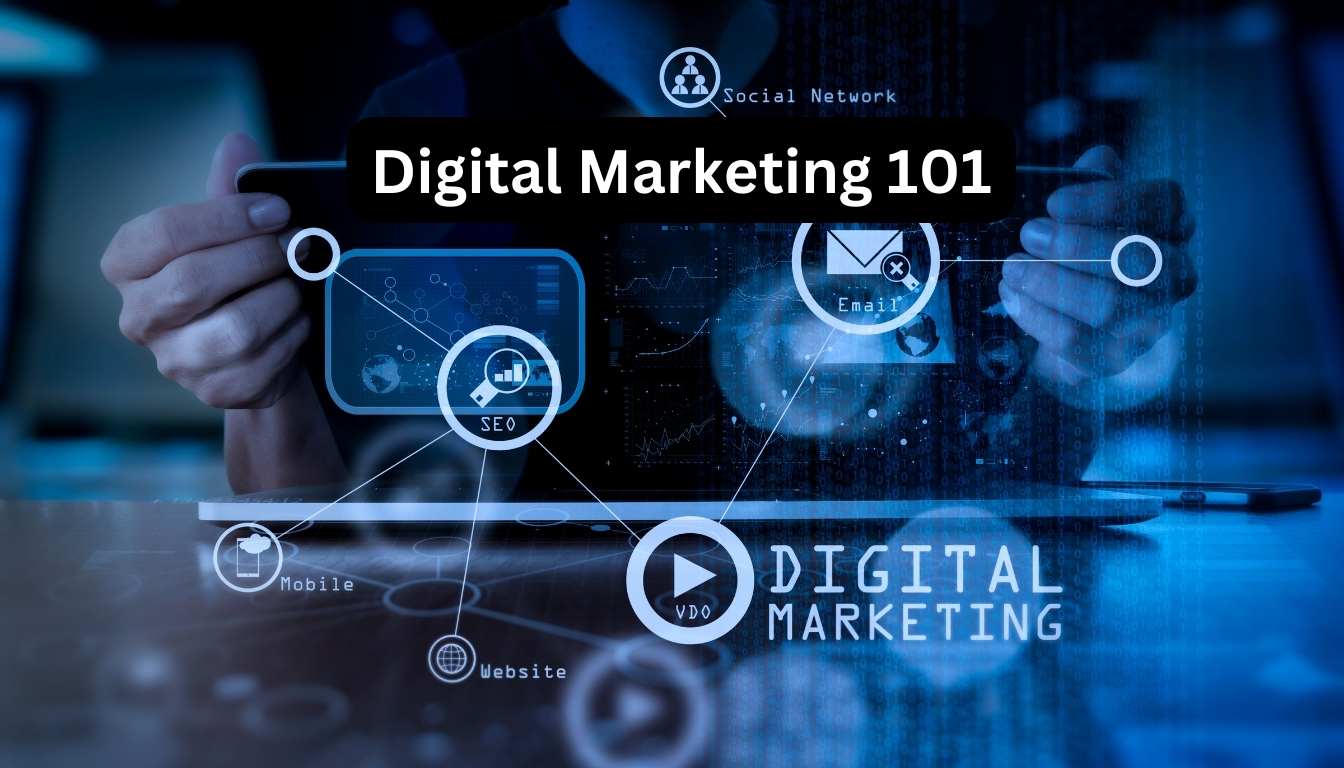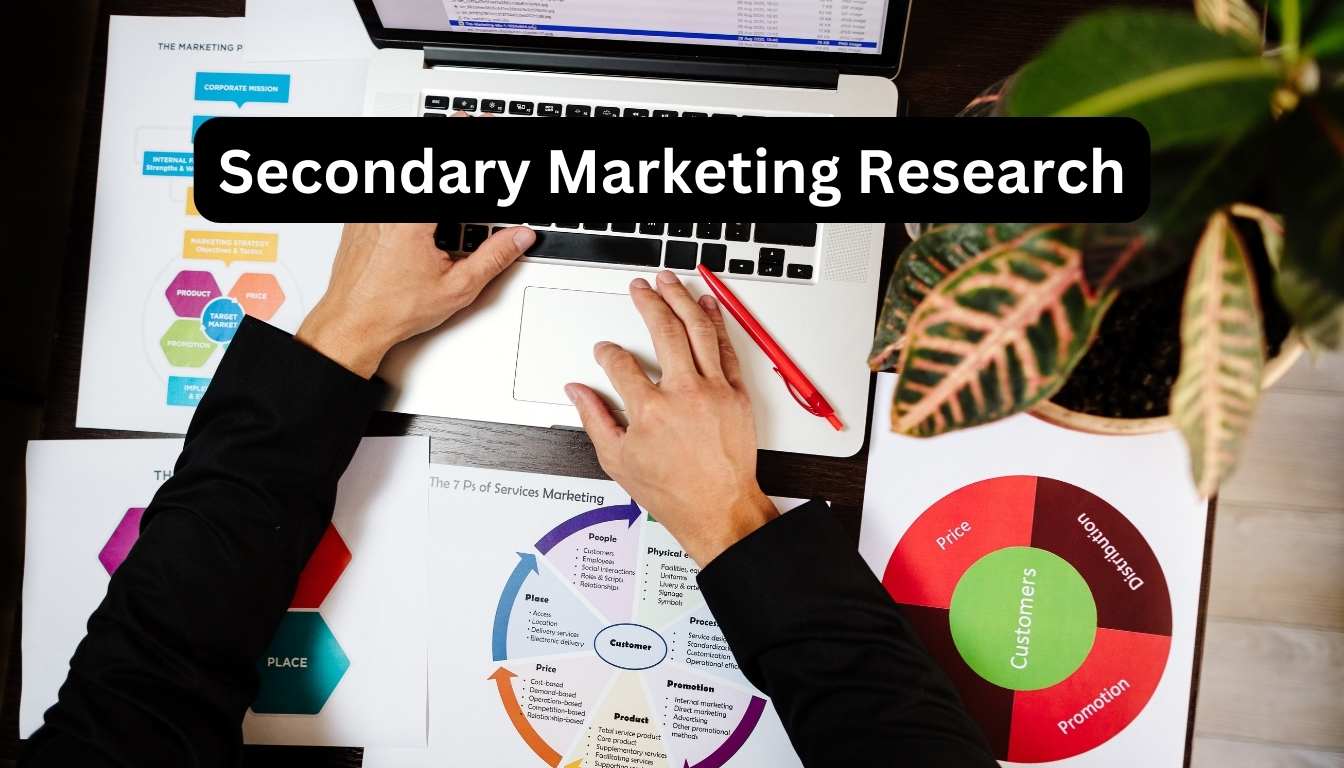In today’s digital landscape, social media has become a powerful platform for businesses to connect with their target audience and drive marketing success. Two popular strategies that have emerged are user-generated content (UGC) and influencer marketing. While both approaches have their advantages, understanding the differences and benefits is crucial for creating an effective marketing strategy.
UGC involves content created and shared by consumers, showcasing their experiences with a brand’s products or services. On the other hand, influencer marketing leverages the reach and influence of individuals with a large following on social media platforms. Let’s dive deeper into this comparison, exploring the key aspects, benefits, and strategies for UGC and influencer marketing.
Key Takeaways:
- Understanding the differences between user-generated content (UGC) and influencer marketing is crucial for developing a successful marketing strategy.
- UGC involves content created by consumers, while influencer marketing relies on individuals with a significant following on social media.
- Benefits of UGC include authenticity, increased brand awareness, and enhanced engagement with the audience.
- Influencer marketing helps reach niche audiences, promote brand loyalty, and create urgency for purchasing.
- Combining UGC and influencer marketing can yield powerful results, providing social proof and expanding brand reach.
Understanding UGC Creators and Influencers
When it comes to harnessing the power of user-generated content (UGC) and influencer marketing, it’s essential to understand the differences between UGC creators and influencers. While both play vital roles in brand promotion, their approaches and content distribution strategies vary.
UGC Creators
UGC creators are paid by brands to create specific videos or photos about products, which are then distributed across the brand’s marketing channels. These creators are experts at crafting compelling content that resonates with their audience and drives conversions.
One key distinction of UGC creators is that they grant the brand full rights to redistribute their content. This allows the brand to leverage the UGC across various marketing platforms, including social media, websites, and advertisements.
Influencers
Influencers, on the other hand, are paid to create and share content on their own social media channels. They have established a significant following and wield influence over their audience’s purchasing decisions. This makes them valuable partners for brands looking to tap into specific niche markets.
Unlike UGC creators, influencers may or may not give the brand the rights to distribute their content. In many cases, influencers prefer to maintain control over the content they create, sharing it exclusively on their own social feeds.
Comparing Distribution Strategies
| UGC Creators | Influencers | |
|---|---|---|
| Content Distribution | Provided to the brand for redistribution | Shared on influencers’ social media channels |
| Content Rights | Granted to the brand | Controlled by the influencer |
As seen in the table above, UGC creators provide their content to the brand, enabling its redistribution across various marketing channels. On the other hand, influencers share their content exclusively on their own social feeds, giving them greater control over its distribution.
Understanding these differences is crucial for brands aiming to optimize their UGC and influencer marketing strategies. Leveraging the strengths of both UGC creators and influencers can help amplify brand messaging and drive engagement across social feeds and marketing channels.
By incorporating UGC creators and influencers into your marketing strategy, brands can harness the power of authentic content creation and influencer reach. This combination can lead to increased brand exposure, greater conversions, and enhanced brand awareness.
Using UGC Creators to Boost Conversions
When it comes to new products that lack testimonials and feedback, harnessing the power of UGC creators can be a game-changer. By enlisting UGC creators to make videos and provide feedback about your products, you can leverage their testimonials and incorporate them throughout your marketing funnel. From paid ads to product pages, these authentic user-generated content pieces act as social proof and significantly boost web conversions.
Studies have shown that incorporating user-generated content on websites can increase web conversions by an impressive 29%. This increase can be attributed to the trust and credibility that UGC creators bring to the table. As potential customers browse your website and encounter genuine testimonials from real users, they are more likely to be influenced and convert into paying customers.
To demonstrate the power of using UGC creators to boost conversions, consider the following example:
| Scenario | Conversion Rate |
|---|---|
| No UGC | 10% |
| With UGC | 12.9% |
In this scenario, incorporating user-generated content resulted in a 2.9% increase in the conversion rate. This difference can have a significant impact on your business’s bottom line.
By strategically integrating UGC created by UGC creators into your marketing channels, such as social media, landing pages, and product pages, you can instill confidence in potential customers and increase their likelihood of making a purchase.
Take advantage of the persuasive power of UGC creators and witness firsthand the incredible impact they can have on your conversion rates.
Leveraging Influencers for Brand Awareness
In the world of marketing, influencers play a crucial role in expanding brand awareness. By collaborating with influencers in niche groups relevant to their brand, companies can effectively reach a wider audience and create more touchpoints, resulting in increased brand awareness and potentially higher conversion rates. Influencer marketing has proven to be a successful strategy for renowned brands like Zara, Shein, H&M, and Nike, who have utilized it to strengthen their presence on Instagram and connect with their target audience on a deeper level.
Influencers have the power to sway consumer behavior and drive engagement through their authentic content and personal connections. By partnering with influencers, brands can tap into their established following to promote products, services, or even an entire brand. These influencers act as trusted voices within their niche communities, making their endorsements incredibly influential.
To leverage influencers effectively for brand awareness, it’s crucial to identify those who align with the brand’s values, aesthetics, and target audience. By choosing influencers who resonate with the brand’s niche groups, companies can ensure their message reaches the right people. This strategy allows for more personalized and targeted marketing, increasing the chances of engaging potential customers who are genuinely interested in the brand’s offerings.
Benefits of Leveraging Influencers
Partnering with influencers offers several advantages for creating brand awareness:
- Expanded Reach: Influencers have a dedicated following, providing access to a wider audience than what a brand might have on its own.
- Affinity with Niche Groups: Influencers often have a specific focus or niche, allowing brands to target their ideal customer base more accurately.
- Authenticity and Trust: Influencers are seen as genuine advocates for products and services, building trust with their followers.
- Increased Touchpoints: By collaborating with influencers, brands can create multiple touchpoints with potential customers, increasing the chances of brand recognition and recall.
- Higher Conversion Rates: Engaged followers who trust an influencer’s recommendations are more likely to convert into customers.
In summary, influencer marketing has become an effective strategy for raising brand awareness. By collaborating with influencers in niche groups relevant to the brand, companies can expand their reach, establish authenticity, create more touchpoints, and potentially drive higher conversion rates. The key to success lies in partnering with the right influencers whose values and audience align with the brand’s objectives.
To illustrate the impact of influencer marketing, let’s take a look at the following example:
Using UGC Creators for Established Brands
For established brands, incorporating user-generated content (UGC) creators into their marketing strategy can fill gaps in their marketing funnel and increase touchpoints across various marketing channels. UGC creators, who produce authentic and relatable content, offer a valuable resource for brands looking to engage their audience and promote their products.
By partnering with UGC creators, established brands can pay them to create brand and product content that aligns with their marketing objectives. This content can then be reshared across multiple marketing channels, including social media, billboards, and packaging, creating a consistent brand message and increasing brand exposure.
UGC creators bring a fresh perspective to brand-created content. Their content is often more relatable and resonates with consumers, helping to build trust and loyalty. Through UGC creators, established brands can tap into the power of user-generated content and leverage it to enhance their marketing efforts.
Incorporating UGC creators into marketing campaigns can also result in increased touchpoints across various channels. The diverse content created by UGC creators can be utilized in email marketing, social media campaigns, and even offline advertising, ensuring that the brand’s message reaches a wider audience.
Here is an example of how an established brand, ABC Clothing, effectively utilized UGC creators across different marketing channels:
| Marketing Channel | Type of UGC | Description | Results |
|---|---|---|---|
| Social Media | UGC Photos showcasing ABC Clothing products | UGC creators were invited to submit photos featuring ABC Clothing products, which were shared on the brand’s social media platforms. |
|
| Email Marketing | UGC Testimonials from UGC creators | UGC creators provided testimonials about their positive experiences with ABC Clothing, which were incorporated into email marketing campaigns. |
|
| Billboards | UGC Photos displayed on billboards | Selected UGC photos were featured on billboards in high-traffic areas, showcasing the brand’s connection with their audience. |
|
This example highlights the versatility and effectiveness of utilizing UGC creators to engage with the audience and drive brand awareness. By incorporating UGC creators into their marketing strategy, established brands can leverage the power of user-generated content to strengthen their brand presence and resonate with their target audience.
Using UGC creators for established brands is an impactful way to optimize marketing efforts and maximize touchpoints across multiple marketing channels. By utilizing this form of authentic and relatable content, brands can connect with their audience on a deeper level and enhance their overall marketing performance.
Engaging with Influencer Audiences
Established brands can effectively engage with their customers by leveraging influencer audiences through relationship marketing. Instead of solely focusing on conversions, influencer campaigns aim to reinforce the brand’s mission and values. By partnering with influencers who align with the brand’s identity, companies can build authentic connections with their target audience.
Influencer campaigns can also inspire organic, unpaid user-generated content (UGC) from the brand’s customers. When customers see influencers promoting a brand, they may feel compelled to share their own experiences and content related to the brand. This organic UGC further enhances brand awareness and creates a sense of community among customers.
Micro-influencers, in particular, have been found to drive high levels of engagement and conversions. Despite having smaller followings compared to A-list celebrities, micro-influencers often have a more engaged and loyal audience within their niche. This targeted approach leads to increased information searches, website visits, and online/offline purchases.
Examples of Successful Influencer Campaigns:
| Brand | Influencer | Objective | Results |
|---|---|---|---|
| Nike | Colin Kaepernick | Reinforce brand values | Increased brand loyalty and positive sentiment |
| Zara | Chiara Ferragni | Drive sales for new collection | Significant spike in online orders |
| Glossier | Emily Weiss | Build brand authenticity | Generated buzz and increased brand trust |
UGC Creators for Optimal Conversion Rates
When it comes to driving conversions, UGC creators play a critical role throughout the marketing funnel. Incorporating user-generated content created by customers into various marketing channels such as social media, landing pages, and product pages can significantly boost confidence and increase the likelihood of making a purchase. In fact, studies have shown that including UGC on web pages can result in a conversion rate increase of over 50%.
Testimonials and authentic user experiences shared by UGC creators serve as powerful social proof, reassuring potential customers and building trust in the brand. By showcasing real people’s experiences with the product or service, brands can tap into the emotional connection and influence purchasing decisions. UGC creators offer a genuine perspective that resonates with consumers, helping to overcome skepticism and hesitation.
The marketing funnel is a crucial journey for potential customers, and UGC creators can effectively guide them through each stage. From creating awareness and consideration to driving the final conversion, UGC content can be strategically placed to nudge users along the path to purchase. By integrating UGC creators’ content into the marketing funnel, brands can create a seamless and informative user experience, ultimately leading to higher conversion rates.
To illustrate the impact of UGC creators on conversion rates, consider the following example:
User-Generated Content in Action: Conversion Rate Results
| Marketing Channel | Conversion Rate Increase |
|---|---|
| Social Media | +52% |
| Landing Pages | +49% |
| Product Pages | +56% |

In this case, the incorporation of UGC created by customers resulted in significant conversion rate increases across different marketing channels. The social media conversion rate saw a remarkable 52% increase, while both landing pages and product pages experienced substantial boosts of 49% and 56%, respectively. These results highlight the power of UGC creators in driving conversions and the importance of leveraging their content throughout the marketing funnel.
By actively engaging with UGC creators and incorporating their content strategically, brands can optimize their conversion rates and foster a sense of authenticity that resonates with their target audience. UGC creators offer a valuable opportunity to showcase the impact and value of a product or service through the lens of real users, ultimately influencing potential customers and driving them towards making a purchase.
Influencers for Creating Urgency and Driving Sales
Influencer marketing is a powerful tool for creating urgency and driving sales. By partnering with influential individuals, brands can leverage their reach and credibility to generate excitement and spur action among their audience. Here are some strategies to effectively utilize influencers in your marketing campaigns.
1. Discount Codes
One effective way to create a sense of urgency and drive sales is by providing influencers with exclusive discount codes to share with their followers. These discount codes offer a limited-time opportunity for consumers to make a purchase at a discounted price. By highlighting the time-sensitive nature of the offer, influencers can incentivize their audience to take immediate action.
2. UTM Tracking
By utilizing UTM tracking, brands can measure the impact of influencer marketing on their website traffic and conversions. UTM parameters allow you to track the specific source and campaign that led a visitor to your website. This data can help you identify which influencers are driving the most traffic and sales, enabling you to optimize your influencer partnerships and allocate resources effectively.
3. Purchase Behavior
Influencers have the ability to influence their followers’ purchase behavior through their authentic recommendations and endorsements. When a trusted influencer promotes a product, their audience is more likely to consider making a purchase. Studies have shown that consumers trust recommendations from influencers almost as much as recommendations from their friends. By strategically partnering with influencers whose values align with your brand, you can leverage their influence to drive sales and increase brand loyalty.
When influencers promote special offers and discount codes, it creates a sense of urgency and motivates their followers to make a purchase. In addition, UTM tracking allows brands to measure the impact of influencer campaigns on website traffic and conversions. Partnering with influencers who align with your brand values can influence purchase behavior and drive sales.
The Future of Marketing: UGC and Influencers
As marketing trends continue to evolve, forward-thinking brands are recognizing the importance of incorporating both User Generated Content (UGC) and influencers into their strategies. While influencer marketing has been a significant part of the industry, the rise of UGC creators and agencies is reshaping the landscape.
These forward-thinking brands are staying ahead of marketing trends by subscribing to resources like the Future of Marketing. By doing so, they gain valuable insights into the latest techniques, best practices, and innovative strategies that will shape the future of the industry.
To effectively navigate the evolving marketing landscape, brands must adapt their strategies based on their specific goals and target audience. This means leveraging both UGC and influencers to achieve desired outcomes. By combining the power of UGC, which fosters authenticity and engagement, with the reach and influence of influencers, brands can stay relevant and maximize their marketing impact.
Future-proofing Your Marketing Strategy
Adopting a future-forward approach to marketing involves recognizing the long-term potential of UGC and influencers while staying agile enough to adapt to emerging trends. However, implementing this strategy requires careful consideration and planning. Here are a few key steps:
- Identify your target audience and marketing goals.
- Research and partner with UGC creators and influencers relevant to your brand.
- Develop a comprehensive content strategy that incorporates UGC and influencer collaborations.
- Continuously monitor and analyze your marketing efforts to optimize performance.
| Benefits of UGC | Benefits of Influencer Marketing |
|---|---|
|
|
By proactively incorporating UGC and influencers into their strategies, brands can position themselves as industry leaders and adapt to the ever-changing marketing landscape. As the Future of Marketing unfolds, brands that embrace these trends will be poised for long-term success.
Successful UGC and Influencer Campaign Examples
User-generated content (UGC) campaigns have proven to be highly effective in engaging audiences and increasing brand awareness. Let’s explore some successful UGC campaign examples and influencer collaborations that have achieved significant results.
UGC Campaign Examples
Brands like National Geographic and Coca-Cola have successfully utilized UGC campaigns to engage their audience and increase brand awareness. By encouraging their customers to submit photos, videos, and stories related to their brand, these campaigns have generated a sense of community and authenticity.
For example, National Geographic’s UGC campaign called “Your Shot” invites photographers from around the world to submit their best shots. The selected images are then featured on National Geographic’s website, social media platforms, and even in their magazine, showcasing the talent and creativity of their audience.
In another example, Coca-Cola launched a UGC contest called “Share a Coke” where customers were encouraged to share pictures of themselves with personalized Coke bottles. This campaign not only increased brand awareness but also created a sense of personal connection and engagement with their audience.
Influencer Collaborations
In addition to UGC campaigns, influencer collaborations have also proven to be highly effective in spreading brand awareness and driving sales. Let’s take a look at two successful influencer campaigns:
1. Absolut’s Collaboration with Eco-Conscious Influencers:
Absolut partnered with eco-conscious influencers who aligned with their brand values and sustainability efforts. These influencers created content around Absolut’s eco-friendly practices, spreading awareness about the brand’s commitment to the environment. This collaboration resulted in increased brand visibility, engagement, and a positive association with sustainability.
2. Dunkin’ Donuts’ Partnership with TikTok Star Charli D’Amelio:
TikTok star Charli D’Amelio, known for her massive following and influence on the platform, collaborated with Dunkin’ Donuts to promote their limited-time menu items. Through a series of sponsored posts and creative challenges, Dunkin’ Donuts reached a wide audience of Gen Z and increased brand awareness, leading to a surge in sales.
These examples illustrate how both UGC campaigns and influencer collaborations can play a significant role in increasing brand awareness and driving customer engagement. By leveraging the creativity and influence of their audience and influencers, brands can create authentic and impactful marketing campaigns.
| Brand | Campaign | Objective | Results |
|---|---|---|---|
| National Geographic | “Your Shot” | Engage audience, showcase talent | Increase brand awareness, community-building |
| Coca-Cola | “Share a Coke” | Create personal connection, increase brand awareness | Increase customer engagement, user-generated content |
| Absolut | Eco-Conscious Influencer Collaboration | Highlight brand values, sustainability | Increase brand visibility, positive association |
| Dunkin’ Donuts | Partnership with Charli D’Amelio | Target Gen Z audience, drive sales | Increased brand awareness, surge in sales |
Conclusion
When it comes to choosing between user-generated content (UGC) and influencer marketing, trade associations need to carefully consider their goals, target audience, budget, and messaging. Both strategies offer unique benefits and considerations that can effectively enhance a brand’s marketing efforts.
UGC campaigns are a cost-effective approach to marketing and have the ability to promote authenticity and provide social proof. By leveraging UGC, trade associations can tap into the creativity and passion of their customers, resulting in relatable and trustworthy content that resonates with their target audience.
On the other hand, influencer marketing allows trade associations to reach niche audiences and build brand loyalty. Collaborating with influencers who have a strong following in specific domains or industries can significantly boost brand awareness and credibility. Influencers can effectively communicate a brand’s message to their dedicated fan base and drive meaningful engagement.
Ultimately, the most effective marketing strategy may involve a combination of both UGC and influencer marketing. By leveraging UGC campaigns to promote authenticity and utilizing influencer marketing to reach niche audiences, trade associations can maximize their marketing impact and achieve their desired outcomes. The key is to carefully analyze the benefits and considerations of each strategy and tailor them to align with specific marketing goals.
FAQ
What is the difference between UGC creators and influencers?
UGC creators are paid to create specific content about products for brands to distribute, while influencers are paid to create content on their own social media channels.
Is the distribution of content different between UGC creators and influencers?
Yes, UGC creators provide their content to the brand for redistribution, while influencers share content on their own social feeds.
How can UGC creators boost conversions?
UGC creators can provide testimonials and feedback about products, which can be incorporated throughout the marketing funnel to increase web conversions.
How can influencers help with brand awareness?
By partnering with influencers in niche groups relevant to the brand, brands can reach a wider audience and create more touchpoints, leading to increased brand awareness.
How can established brands use UGC creators?
Established brands can pay UGC creators to make brand and product content, which can then be reshared across various marketing channels to increase touchpoints.
How can brands engage with influencer audiences?
Brands can use influencer campaigns to reinforce their mission and values, inspiring organic, unpaid UGC from the brand’s customers and building relationships with their audience.
How can UGC creators improve conversion rates?
By incorporating UGC into marketing channels such as social media, landing pages, and product pages, brands can instill confidence in potential customers and increase conversion rates.
How can influencers create urgency and drive sales?
Brands can provide influencers with discount codes and promote special offers to create a sense of urgency around purchasing. By using UTM tracking, brands can retarget website visitors from influencer posts with paid ads.
Should brands focus on UGC or influencers?
Brands should consider their goals, audience, budget, and messaging to determine whether UGC or influencers are the best strategy. A combination of both can yield the most impactful results.
Can you provide examples of successful UGC and influencer campaigns?
Brands like National Geographic and Coca-Cola have engaged their audience and increased brand awareness through user-submitted content. Absolut and Dunkin’ Donuts have also had successful influencer campaigns.
What are the benefits and considerations of UGC and influencer marketing?
UGC campaigns are cost-effective, authentic, and provide social proof, while influencer marketing can reach niche audiences and create brand loyalty. Trade associations should consider their goals and audience when choosing between the two strategies.






